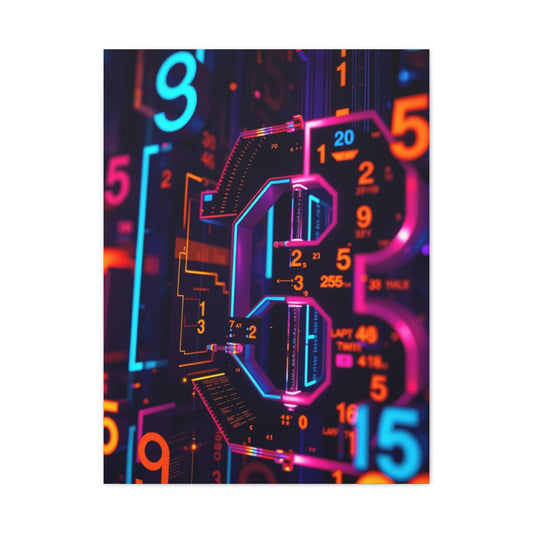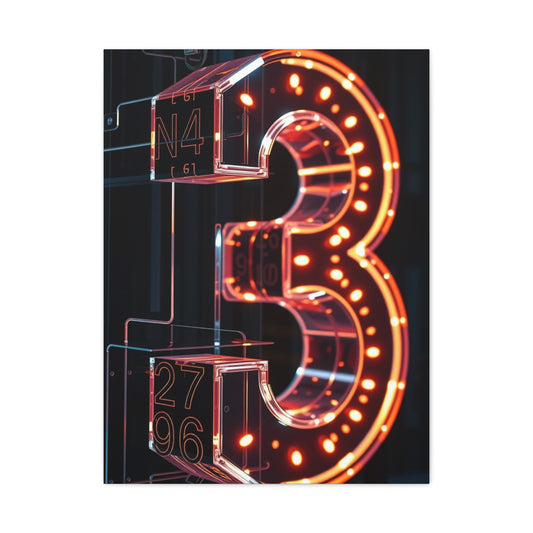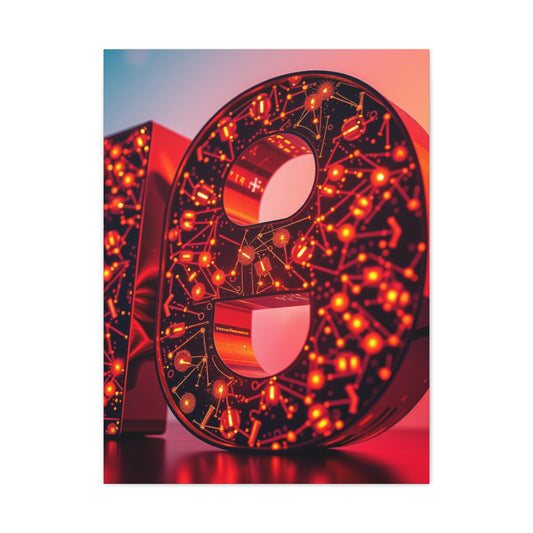Large Scale Number Wall Art
When we think about shaping a family living space into something lively, memorable, and infused with personal symbolism, it often comes down to the details we choose to display on our walls. Walls are the silent witnesses of everyday life, from simple family meals to festive gatherings, and they become even more expressive when adorned with meaningful art. A giant wooden number can be one of those surprisingly delightful touches that transforms a plain surface into a playful conversation starter. The number 6, in particular, carries an extra layer of resonance when it is tied directly to the number of people in a family. What might seem like a simple numeral on paper suddenly becomes a marker of identity, unity, and belonging when it takes shape in large-scale form within the central hub of a household.
The project of crafting a wooden number for wall display is not merely a matter of carpentry and spray paint. It is a gesture of storytelling through objects. Each stroke of sandpaper, each curve cut with the jigsaw, and each layer of vibrant color applied with spray paint becomes part of a narrative. For one family, the numeral might symbolize the joy of togetherness, while for another it might represent an anniversary, a lucky number, or even a playful nod to an inside joke. It is the act of investing meaning into form that elevates the creation beyond decoration into the realm of artful expression.
The number 6 is especially compelling because of its circular composition and smooth rhythm. Unlike angular digits that often appear rigid, the six loops gently into itself, embodying wholeness and continuity. It captures a visual softness that harmonizes with many styles of interior design, whether the room is furnished in rustic farmhouse textures, mid-century modern lines, or bright eclectic accents. The fact that this particular piece is crafted at home with simple materials, from a sheet of plywood to strips of adhesive wall mounts, reinforces the accessibility of creative living. Anyone, with a bit of patience and curiosity, can bring a personal emblem to life in their home.
In many ways, the story begins not with sawdust and paint fumes but with the spark of imagination. An idea as lighthearted as turning the family number into a towering wall sculpture can ripple outward, creating anticipation among children, stirring nostalgia in parents, and even leading to humorous misunderstandings, like a mother assuming the announcement of twins. Such moments add texture to the making, reminding us that creativity is never only about the finished product but about the laughter, memories, and dialogue that form along the way.
Historical Background
The tradition of using numbers and symbols in domestic spaces is not as new as one might imagine. Across centuries and cultures, numerals have been inscribed into architecture, woven into textiles, painted on ceramics, and carved into wooden household objects. In ancient Rome, household gods known as Lares were often represented alongside numerals that marked years or dedications. In medieval Europe, families engraved numbers above doorways to signify dates of construction, ownership, or protection rituals. In Japan, numbers carry profound spiritual meaning, and their placement in design can alter the perceived flow of energy within a room.
The number six itself has enjoyed a long history of symbolic associations. In Pythagorean mathematics, six is considered a perfect number, the sum of its divisors equaling itself, which imbued it with a sense of completeness and harmony. In Judeo-Christian tradition, six often appears in reference to creation, as the world was formed in six days. In Islamic culture, six points form the Star of David-like hexagram known as the Seal of Solomon, signifying wisdom and power. In Chinese tradition, the number six, pronounced “liu,” carries connotations of smoothness and ease, often regarded as an auspicious numeral that attracts prosperity.
When we translate such cultural reverberations into modern living rooms, we realize that hanging a large number 6 on a wall is not simply whimsical but part of a much older continuum of humans embedding numbers into their domestic worlds. It connects personal stories—like representing a six-member family—with universal histories that have revered the digit across time and geography.
Wood as a medium further roots the project in tradition. For centuries, woodcarving has been the language through which artisans expressed devotion, skill, and identity. From the ornate Baroque church panels of Europe to the simple domestic charms of Shaker furniture in America, wood has offered both permanence and intimacy. A plywood sheet might seem modest compared to mahogany or walnut, yet even this humble material carries echoes of an enduring craft lineage. The simple act of cutting, sanding, and painting revives an age-old practice, reinterpreted in the light of contemporary DIY culture.
Core Concepts and Foundations
At the heart of creating a giant wall-mounted number is the convergence of three foundational concepts: symbolism, materiality, and functionality. These principles guide the process from the spark of the idea to the moment the finished piece finds its place on the wall.
Symbolism forms the emotional anchor. Choosing a number is not arbitrary—it represents something of deep personal or familial value. For a household of six, the digit becomes an emblem of collective identity. The choice of font style, whether bold and geometric or soft and cursive, adds another layer of personality, reflecting whether the family’s energy is dynamic, playful, sophisticated, or whimsical.
Materiality reminds us that meaning must take tangible form. Plywood, though inexpensive, is light enough to be cut with home tools and sturdy enough to last for years. The grain of the wood, though often hidden beneath spray paint, contributes to the tactile story of the piece. Sanding, drilling, and painting are not mechanical steps but acts of engaging directly with matter, transforming raw sheets into resonant symbols.
Functionality closes the circle. A piece of art may carry profound meaning and delightful aesthetics, but it must also integrate smoothly into everyday living. By mounting the number with removable strips instead of nails, the project respects the evolving needs of the space. The number can be shifted, taken down for repainting, or relocated without damaging the wall. This consideration of adaptability reflects the essence of family life, which itself is in constant motion and transformation.
A final foundation is accessibility. Unlike fine art that requires costly materials or years of apprenticeship, this project thrives on simplicity. The supplies—plywood, spray paint, sandpaper, and a jig saw—are readily available at any hardware store, while the process invites participation from older children or curious relatives. This accessibility turns the project into a democratic form of art-making, where creativity is not confined to galleries but woven into the rhythms of everyday living.
Types and Categories
While the project described here centers on a single large wooden numeral, it belongs to a broader category of wall art defined by personalization and symbolic form. Within this category, several variations can be observed, each with its own character and applications.
One type is dimensional numerals, where numbers are carved, cut, or molded into three-dimensional shapes. These may range from rustic wooden digits to sleek acrylic forms or even metal sculptures. Dimensional numerals stand out for their ability to cast shadows and create dynamic interplay with light, lending a room both depth and drama.
Another type is painted numerals, which involve stenciling or freehand painting directly onto walls or canvases. Unlike cut-out wooden figures, painted numerals integrate seamlessly with the wall surface, offering a more subtle but equally expressive approach. They can be layered with other motifs, such as florals, geometric patterns, or textured backgrounds, to enrich the overall composition.
There are also illuminated numerals, where the form is outlined with LED strips, neon tubing, or backlighting. These carry a strong contemporary aesthetic, often seen in urban lofts or creative studios, but can equally be adapted for playful family spaces. A glowing number six, for example, could double as a gentle night light in a living room that also serves as a children’s play area.
Finally, there is the category of temporary or modular numerals, made with materials such as cardboard, foam board, or removable vinyl decals. These are particularly suited to events like birthday parties, family reunions, or seasonal décor, where the symbolic impact is needed for a limited duration. A foam board number six at a six-year-old’s birthday party creates a festive backdrop that can later be recycled or replaced without guilt.
What unites all these types is the act of embedding significance into form. Whether sturdy and permanent or light and ephemeral, the numeral becomes a vessel of meaning, grounding abstract ideas—like family unity or celebration—into something tangible and visible.
Practical Applications
In practice, a giant number six can function in diverse ways depending on context and intent. In a family living room, it serves as a playful focal point, drawing the eye and prompting smiles. Positioned above a sofa, it frames conversations and becomes part of the daily visual rhythm. Children can point to it as a marker of belonging, proudly identifying themselves as part of the family six. Guests may ask about its story, turning the artwork into a doorway for anecdotes and laughter.
Beyond the living room, such numerals can extend into event décor. A large painted or wooden number can anchor a birthday celebration, wedding anniversary, or graduation party. In these contexts, the numeral serves as both decoration and documentation, signaling the milestone being celebrated. A number six at a birthday gathering, for instance, crystallizes the memory of turning six years old, while a number twenty-five may commemorate a quarter-century of marriage.
Businesses and community spaces can also harness the same principle. Restaurants, cafés, and creative studios often display numerals to highlight addresses, founding years, or thematic motifs. A coffee shop at 6th Avenue might install a bold six on its wall to reinforce its identity. Community centers might use large numbers to guide visitors through different rooms or to highlight years of operation in commemorative displays.
Even in outdoor environments, large numerals carry potential. Painted on garden fences or cut from weatherproof materials for patios, they can lend character to outdoor gatherings. The choice of paint color, whether sun yellow as in the original project or earthy terracotta tones, determines whether the piece radiates playful energy or grounded warmth.
The adaptability of such projects lies in their simplicity. They can be scaled up or down, colored to suit any palette, and placed in diverse contexts. At their core, they embody the power of ordinary materials transformed through creativity into emblems of memory, unity, and celebration.
Techniques and Methods
The craft of creating a giant wall-mounted number blends the precision of carpentry with the artistry of design. While it may seem at first like a straightforward matter of cutting plywood and spraying on paint, the process actually holds layers of technical nuance. The choice of template, the rhythm of the saw, the patience in sanding, and the finesse of the paint application all determine whether the final product emerges as a polished focal point or a rough approximation.
The first technique begins with templating. Creating a template ensures that the digit retains proportion and balance. One common method is to design the numeral digitally in a program such as Silhouette Studio, Illustrator, or even a simple word processor. The challenge is to scale the digit to a substantial size, often requiring the image to be printed across multiple sheets and then pieced together like a puzzle. This step requires attention to alignment because even the slightest misplacement of taped pages will distort the curves of the number. An alternative technique, for those who prefer analog methods, is to sketch the number freehand onto kraft paper using a projector or grid system. The latter echoes a Renaissance-era approach to scaling artwork, where artists translated small drawings into large frescoes by carefully expanding the grid.
Once the template is prepared, transferring it onto plywood becomes the next stage. Plywood of a quarter inch offers an ideal balance between durability and manageability. The pencil tracing must be crisp and deliberate, hugging the edges of the template to avoid unevenness. This step may seem minor, yet it sets the stage for the integrity of the cut, as a wandering pencil line can become a jagged saw path later.
Cutting is the moment when raw material begins its metamorphosis. The jig saw, with its oscillating blade, is the tool of choice for maneuvering around curves. Unlike a circular saw, which favors straight lines, the jig saw thrives on flexibility, allowing the maker to pivot around the rounded belly of a six. The technique here is slow steadiness—forcing the blade too quickly creates splintering, while hesitating too often leaves behind rough edges. Experienced makers sometimes recommend clamping the plywood to a sturdy work surface, both for stability and safety, while using a finer-toothed blade designed for clean wood cuts.
After cutting, sanding refines the surface. Sandpaper serves as the sculptor’s chisel in this stage, smoothing sharp ridges and softening edges so that the piece feels pleasant to the touch as well as pleasing to the eye. Beginning with a medium grit removes imperfections, while finishing with a finer grit prepares the surface for paint adhesion. The circular edges of a six benefit from careful hand sanding, as machines sometimes struggle with inner arcs and delicate curves.
Painting follows, and this is where the personality of the number takes shape. Spray paint is effective for its even coverage and speed, but technique matters. Holding the can eight to twelve inches away and moving it in steady sweeps avoids drips and patchy color. Multiple thin coats build up depth and resilience far better than a single thick layer. Some creators choose glossy finishes to make the numeral pop in vibrant tones, while others prefer matte or satin for understated elegance. More advanced methods include layering colors for gradient effects or masking off areas with painter’s tape to create patterns within the digit.
Finally comes installation, which transforms the crafted piece into an integrated element of the home. Command picture hanging strips are especially practical for lightweight plywood digits, providing strength without permanent damage to the wall. Placement requires thoughtful measurement, ensuring the numeral sits at eye level and maintains proportion with surrounding furniture. This last stage turns the project from object to art, as its relationship with the room determines its impact.
Challenges and Common Mistakes
Though the process appears approachable, it is not without its stumbling blocks. Novices often encounter pitfalls that compromise the final appearance or structural soundness of the project. Recognizing these in advance helps avoid frustration and ensures a smoother creative journey.
One common mistake arises in the templating phase. If the template is not properly aligned when printed across multiple pages, the resulting number may appear lopsided. This is particularly noticeable in digits with curves, such as the six, where asymmetry becomes glaring. A careful review before cutting is essential, taping the printed sheets together on a flat surface and stepping back to evaluate proportions from a distance.
Cutting too hastily with the jig saw often leads to splintering along the plywood’s edges. Plywood, composed of layers of veneer, is especially prone to this issue. Rushing through the curves or using a dull blade can leave unsightly frayed fibers that are difficult to sand away. A solution is to apply masking tape along the cutting line, which helps stabilize the top layer of veneer as the blade passes through.
Another challenge is sanding. Beginners may neglect this step, assuming that the paint will conceal imperfections. In reality, unsanded wood absorbs paint unevenly, creating blotches and rough patches. Worse, sharp edges may remain hazardous to touch. Patience in sanding is not glamorous, but it is indispensable for achieving a professional finish.
Paint application can also trip up creators. Spraying too close results in drips, while inconsistent motion produces streaks. Overhandling the piece between coats may leave fingerprints or smudges in the finish. The key is to allow sufficient drying time between layers, often longer than expected, depending on humidity and temperature.
Installation presents its own set of hurdles. Hanging strips, if not pressed firmly or aligned accurately, may loosen over time, causing the numeral to tilt or fall. Measuring incorrectly can lead to a crooked display, undermining the visual harmony of the room. The rule of thumb is to measure twice, mount once, using a level if necessary to ensure alignment.
On a broader level, a recurring mistake is undervaluing scale. Sometimes the chosen size overwhelms the wall, while other times it appears too diminutive to command attention. Testing the dimensions with a paper mock-up taped to the wall helps avoid disappointment. This preliminary step, though seemingly extra work, ensures the final installation feels proportionate to the room’s architecture.
Trends and Future Outlook
In recent years, there has been a resurgence of interest in personalized wall art, driven by the desire to make homes reflect individual stories rather than generic catalog aesthetics. Numbers as decorative motifs fit seamlessly into this trend, balancing clarity with symbolic resonance. The popularity of monograms and initials has already paved the way, and numerals are their natural counterpart, offering a more abstract yet equally personal vocabulary.
A current trend is the use of oversized typography in interior design. Letters and numbers, painted boldly or mounted as sculptural elements, create striking focal points. This echoes broader design movements that emphasize statement pieces—single, dramatic objects that anchor a room’s aesthetic. The giant number six project belongs to this lineage, embodying both scale and symbolism.
Another evolving trend is sustainability. Many makers now opt for reclaimed wood rather than new plywood, infusing projects with eco-conscious values. A numeral cut from salvaged barn wood, for instance, not only reduces environmental impact but also carries a patina of history that enriches the piece. Similarly, water-based, low-VOC paints are replacing traditional spray paints, aligning creativity with environmental responsibility.
The future may also see increasing integration of technology into such projects. Digital fabrication methods like CNC routing and laser cutting allow for precision and scalability, making it easier to produce intricate fonts or replicate designs. However, the hand-crafted element will likely remain cherished, as imperfections and tactile traces of human labor imbue pieces with authenticity.
Illumination is another area of growth. As affordable LED technologies become more versatile, backlit or edge-lit numerals are likely to proliferate. Imagine a softly glowing six in a family living room, radiating warmth during evening gatherings. These innovations merge craft with contemporary design, broadening the expressive possibilities of such projects.
On a cultural level, personalization in home décor is expected to intensify. In a world of mass production, families increasingly seek ways to mark their spaces with intimate narratives. Wall art projects that incorporate symbols of identity—numbers of family members, anniversary years, or favorite lucky digits—will continue to flourish. The number becomes less about mathematics and more about memory, carrying the aura of personal mythology into everyday surroundings.
Expert Insights
Experts in design, craft, and symbolism often emphasize that the significance of a project lies not only in its technical execution but also in the intention behind it. Interior designers note that statement numerals can function as anchors in a room’s composition, balancing visual weight with surrounding elements. A large number placed above a sofa or console table, for instance, serves much like a painting, guiding the eye and establishing hierarchy within the wall space.
Carpenters and woodworkers highlight the importance of precision in cutting and finishing. They remind novices that plywood, while accessible, demands respect for its layered structure. A skilled hand at the jig saw can make the difference between a clean, flowing curve and a jagged approximation. Their advice often stresses patience, the use of sharp blades, and the willingness to practice on scrap pieces before tackling the final cut.
Color experts underscore the psychological impact of paint choice. A sunlit yellow number radiates optimism and warmth, fostering cheerfulness in family gatherings. By contrast, a deep navy six might evoke calm and stability, while a crimson one might infuse energy and vibrancy. The choice of gloss, satin, or matte further modifies the mood. Such nuances transform the number from mere decoration into a tool of atmosphere.
Cultural historians point out the long-standing significance of numerals across civilizations, reminding us that what may appear playful today is in fact rooted in centuries of tradition. They encourage families to consider not only personal but also cultural resonances. For example, the number six as a perfect number in mathematics, or as a symbol of smooth fortune in Chinese tradition, may add depth to its placement in a home.
Finally, experienced DIY enthusiasts often share practical wisdom gleaned from trial and error. They advise not to rush, to measure carefully, to embrace imperfections, and above all to enjoy the process. For many, the act of creating alongside family members—whether children sanding edges or spouses debating colors—becomes as meaningful as the final product. The numeral on the wall is thus both artifact and memory, embodying the joy of making together.
Emerging Trends in Wall Art
The landscape of wall art has shifted dramatically over the past decade, moving from traditional framed paintings and family photographs to an expansive array of experimental formats. What once was considered an afterthought in interior design has evolved into a vital expression of individuality and cultural currents. Emerging trends in wall art reveal how homes are no longer simply functional shelters but curated sanctuaries of meaning and memory.
One of the most significant trends is the rise of oversized art. Large-scale pieces command attention, serving as focal points in living rooms, hallways, or entryways. Instead of clustering numerous small frames, people now gravitate toward a single monumental piece that transforms the spatial atmosphere. This preference for scale reflects broader societal values of bold self-expression and confidence.
Personalization is another defining trajectory. Homeowners increasingly seek art that speaks directly to their story, whether through custom portraits, symbolic motifs, or numbers and letters that carry special significance. The giant number six in a family living room, for instance, is part of this trend, embodying personal mythology rather than mass-produced aesthetics. Advances in digital printing and accessible DIY techniques empower people to create their own symbols and translate them into meaningful décor.
Sustainability has become an inseparable dimension of contemporary art trends. Reclaimed wood panels, recycled metals, and biodegradable pigments are not only environmentally sound but also narratively rich. A wall piece crafted from salvaged barn wood, for example, tells a story of renewal and continuity, resonating with eco-conscious values. This reflects a broader cultural movement toward responsible consumption and respect for material origins.
Mixed media and textural experimentation are gaining traction. Walls no longer host flat images alone but showcase three-dimensional compositions that blend fabric, wood, glass, or even living plants. Such works transform walls into tactile landscapes, engaging multiple senses. The inclusion of natural fibers or rough-hewn surfaces breaks away from the polished sterility of mass-market décor, inviting touch and intimacy.
Illuminated art is another flourishing trend. With the accessibility of LED lighting, neon-inspired signage and backlit pieces have moved into domestic spaces. These works bridge art and ambiance, doubling as mood lighting. A glowing numeral, for example, functions both as décor and as a soft evening lamp, blurring the boundary between utility and artistry.
Cultural eclecticism also shapes the present moment. Global influences flow seamlessly into interiors, from African tribal patterns to Japanese minimalist ink strokes. The blending of traditions creates unique hybrids, reflecting the interconnectedness of modern life. Families increasingly adopt motifs not only from their heritage but also from cultures that inspire them, producing walls that narrate cosmopolitan stories.
The future of wall art will likely expand further into interactive realms. Augmented reality, projection mapping, and digital installations are already appearing in avant-garde design. A wall piece may no longer be static but dynamic, shifting colors or patterns according to time of day or mood. Yet even as technology reshapes possibilities, the handmade dimension continues to thrive. The warmth of woodgrain, the irregularity of brushstrokes, and the intimacy of DIY projects remain irreplaceable, offering balance in an increasingly digital age.
Step-by-Step Guides
For those inspired by these trends yet uncertain where to begin, practical guidance is essential. Crafting wall art at home, whether a giant numeral or a textural canvas, need not be intimidating. The process unfolds through deliberate stages, each with its own rhythm and requirements. By approaching it methodically, even beginners can achieve results that feel polished and meaningful.
The first step is ideation. Before gathering tools or sketching designs, spend time reflecting on what the artwork should represent. Ask what story you want your walls to tell. For some, it may be a number signifying family members. For others, it might be a date, a silhouette, or a geometric form. This stage is less about technicality and more about narrative clarity. Jot down inspirations, browse visual references, and create a mood board to crystallize your vision.
Next comes material selection. Choose materials aligned with both your aesthetic preferences and practical constraints. Plywood is affordable and versatile, offering durability without heaviness. Canvas suits painted or mixed-media projects, while reclaimed wood introduces rustic authenticity. Think about texture, weight, and compatibility with your tools. The choice of material becomes part of the story—whether it radiates modern sleekness, natural warmth, or artisanal charm.
Design development follows. If working digitally, use design software to experiment with scale, font, and proportions. If working analog, sketch on large paper or use a grid system to maintain accuracy. The design should be tested visually in the intended space. Tape a paper mock-up to the wall to assess size and placement before committing to the final version. This trial run saves time and prevents scale-related disappointments.
Transfer the design onto the material carefully. For wood, this means tracing the paper template with a pencil. For canvas, lightly sketch with graphite or chalk. Precision in this stage ensures clean lines later, so take time to double-check measurements and alignment.
Cutting or shaping comes next for wooden projects. Secure the material firmly and use the appropriate tool, whether a jig saw for curves or a craft knife for foam board. Maintain steady pressure and let the tool do the work rather than forcing it. Safety is paramount, so gloves and goggles should be standard practice.
Sanding and surface preparation are essential before finishing. This step creates smoothness and removes imperfections. Begin with medium-grit sandpaper and graduate to finer grit, ensuring edges are softened. For canvas or paper-based projects, consider applying gesso to prime the surface for paint adhesion. Proper preparation enhances durability and polish.
Painting or decorating follows. Choose colors that resonate with the room’s palette and the emotional atmosphere you wish to cultivate. Apply paint in thin layers, building depth gradually. Experiment with finishes—gloss for vibrancy, matte for subtlety, metallics for drama. Some projects may call for embellishment with stencils, textures, or layered effects. Allow each coat to dry thoroughly to avoid smudging or unevenness.
Mounting is the final physical stage. Lightweight pieces can be secured with adhesive strips, while heavier works may require nails, brackets, or anchors. Placement is critical: consider sightlines, furniture arrangement, and balance with other wall elements. A level tool can ensure the piece hangs straight, maintaining visual harmony.
Once installed, step back and observe. Assess how the piece interacts with natural and artificial light, how it complements colors in the room, and how it alters the atmosphere. Sometimes minor adjustments in height or location make significant differences. This reflective stage ensures the artwork fulfills its intended role.
Beyond physical steps, consider ritual. Document the process with photographs or notes, turning the making into a family memory. Invite children to help sand or choose colors, embedding their fingerprints into the story. The piece then transcends its material form, becoming a living emblem of shared experience.
Step-by-step guidance is not only about mechanical actions but about cultivating a mindset of patience, curiosity, and playfulness. The process teaches not just how to make art but how to integrate creativity into daily life. Walls become canvases for personal mythologies, and homes become galleries of lived stories.
Integration with Interior Design
Wall art in any form is never isolated from its environment. A wooden numeral, a painted canvas, or a glowing sculpture gains its full power only when considered in dialogue with the larger room. The interplay of color palettes, textures, furniture, and light determines whether a piece feels harmonious or out of place. Integrating art into a home requires sensitivity to scale and proportion. A giant number six, for instance, may dominate a modest living room if not balanced by complementary elements, but in a spacious family area, it can anchor the entire arrangement.
Integration begins with color theory. The chosen hues of the artwork should converse with surrounding shades rather than clash. A bright yellow six may bring warmth to a room dominated by neutral grays, while a muted sage tone could soothe a space already filled with natural wood and earth tones. Beyond color, texture plays a subtle role. A glossy finish reflects light, creating sparkle in daylight or shimmer under artificial lamps, whereas a matte surface absorbs illumination, producing a grounded, contemplative effect.
Placement within the room is another crucial consideration. Eye-level hanging tends to create the most direct impact, but sometimes slightly off-centered arrangements generate dynamism and intrigue. Designers often recommend leaving breathing space around oversized art so that it feels intentional rather than cramped. For families, the artwork’s visibility matters too—placing the numeral at a height where children can see and appreciate it ensures that the piece fulfills its symbolic role of inclusiveness.
Integration also extends to seasonal adjustments. Wall art need not remain static; it can interact with evolving decorations. A large six might be adorned with a garland during holidays, framed with fairy lights in winter, or complemented by vases of sunflowers in summer. This adaptability reinforces the idea of art as a living participant in family life rather than a fixed ornament.
Emotional and Symbolic Dimensions
Beyond visual impact lies the deeper realm of meaning. Numbers have always carried symbolic weight, and bringing them into domestic spaces transforms houses into narratives of identity. For a six-member family, a wall-mounted numeral is both literal and poetic: it affirms the togetherness of the household while evoking broader traditions of harmony and balance.
The emotional dimension emerges in daily interactions. Children glance at the number and recognize their place within a collective. Guests notice the artwork and are drawn into conversations about family bonds. The numeral becomes shorthand for shared history, reminding everyone of the invisible threads that connect individuals into a whole. In this sense, the art functions not merely as décor but as a totem of belonging.
Symbolism also connects to wider cultural contexts. In many traditions, six represents smooth progress, equilibrium, or perfection. Embedding such a symbol into a home taps into centuries of collective imagination. Even if the choice begins as playful or aesthetic, the deeper associations inevitably resonate. Over time, the number becomes layered with stories, memories, and aspirations, evolving from an object into a household heirloom.
The act of making the artwork intensifies its emotional gravity. Sawdust in the air, the vibration of the jigsaw, the smell of fresh paint—all these sensory experiences embed themselves into memory. Each time the family looks at the number, they recall the laughter and labor that went into its creation. In this way, the artwork becomes autobiographical, carrying the imprint of lived moments.
Cultural Resonance and Broader Narratives
Wall art is not only personal but also part of larger cultural narratives. Around the world, numbers have been used as architectural markers, talismans, or commemorations. By placing a giant number six on a wall, a family participates—perhaps unknowingly—in this deep historical continuum.
Architectural traditions across Europe often inscribed dates or numbers above doorways, immortalizing construction years or ownership. In Asia, auspicious numbers frequently adorned temples or homes to attract prosperity. In North Africa, numbers and geometric motifs appeared in tilework, combining mathematical precision with artistic beauty. These traditions demonstrate that embedding numbers into physical spaces has long been a human instinct.
Contemporary culture continues this lineage in new forms. Street art often employs oversized numerals to mark neighborhoods or pay homage to local identities. Digital culture has amplified the symbolic resonance of numbers through hashtags, anniversary milestones, and even memes. Bringing such symbolism into the home, then, is not only decorative but also culturally relevant, aligning personal identity with global practices.
The specific choice of six resonates across multiple contexts. As a perfect number in ancient mathematics, six embodies completeness. As a symbol of smoothness in Chinese tradition, it conveys ease and fortune. Within Christian narratives, it signifies creation. This multiplicity of associations enriches the artwork, allowing it to operate on many levels simultaneously. Families who choose such a number engage not only with their own story but also with these broader symbolic tapestries.
Practical Longevity and Care
For wall art to endure, attention must be given to maintenance and longevity. A wooden numeral, while sturdy, is still susceptible to environmental factors such as humidity, temperature shifts, and sunlight. Regular care ensures that the piece continues to inspire for years to come.
Sealing the surface with a clear protective coat after painting can help resist fading and scratches. Matte or gloss sealants both serve this function, depending on the desired finish. Positioning the piece away from direct sunlight prevents discoloration, particularly when bright pigments are used. In humid climates, ensuring adequate ventilation reduces the risk of warping or peeling.
Installation methods also affect longevity. While adhesive strips provide convenience, they may weaken over time, especially in fluctuating temperatures. For permanent display, small brackets or anchors may be more reliable. Choosing the right system depends on whether the family anticipates moving or rotating the piece in the future.
Occasional cleaning preserves vibrancy. Dusting with a soft cloth or lightly wiping with a damp, non-abrasive material is usually sufficient. Harsh chemicals should be avoided, as they may erode paint or finish. Through such care, the artwork retains its original radiance and continues to contribute to the household’s aesthetic harmony.
Legacy and Personal Mythology
Perhaps the most profound dimension of creating and displaying symbolic wall art lies in its role as legacy. Homes are archives of lived experience, and the objects within them transmit stories across generations. A giant wooden number may begin as a playful project but can evolve into a cherished heirloom, passed down with anecdotes of its making.
Children who grow up seeing the numeral daily may one day recall it with nostalgia, associating it with warmth and togetherness. They may even replicate the idea in their own homes, perpetuating the tradition. Thus, the artwork transcends its material form to become a vessel of personal mythology.
This continuity echoes the ancient human instinct to mark spaces with symbols. Just as medieval builders etched dates into stone and artisans carved numerals into wood, modern families carve their stories into domestic environments. The number six, in this context, becomes a modern rune, inscribed not in ancient temples but in living rooms filled with laughter, conversations, and everyday rituals.
The concept of legacy also expands beyond the family. Guests and visitors absorb the symbolism, carrying it into their own imaginations. The story of the numeral’s creation spreads, perhaps inspiring others to undertake similar projects. In this way, personal art radiates outward, contributing to a wider culture of creativity.
Conclusion
The journey of crafting and displaying a giant wall-mounted number reveals far more than a simple decorative gesture. It illustrates how creativity transforms ordinary materials into vessels of meaning, how design principles align with emotional resonance, and how personal choices echo across cultural traditions. From the careful tracing of a template onto plywood to the patient strokes of spray paint, every stage embodies both craft and symbolism.
Emerging trends in wall art underscore a desire for personalization, sustainability, and bold expression. Families no longer settle for generic prints but instead seek objects that mirror their identities and aspirations. A numeral on the wall is not just a shape but a story: it affirms unity, sparks conversation, and participates in an enduring human practice of embedding symbols into living spaces.
The challenges of such projects, from misaligned templates to uneven paint, remind us that imperfections are part of the process. They lend character, ensuring the final piece bears the marks of authenticity. Trends suggest that as technology and sustainability reshape possibilities, handmade projects will retain their power precisely because of their intimacy and imperfection.
Ultimately, the conclusion is clear: wall art, whether grand or humble, is more than embellishment. It is a mirror of who we are, a marker of memory, and a beacon of continuity. The giant number six in a family living room is both playful and profound, both simple and layered with meaning. It unites practical craft with symbolic depth, anchoring the household in a shared story that will resonate across time.
As families continue to shape their homes into expressions of identity, projects like this remind us of the essential truth that walls are not merely barriers but canvases. Onto them we inscribe our values, our joys, and our myths, turning spaces into sanctuaries of belonging. The six, glowing or painted, smooth or rustic, stands as a testament to the timeless human impulse to make meaning visible, to transform the everyday into the extraordinary, and to remind us that art, at its heart, is the story of us.












